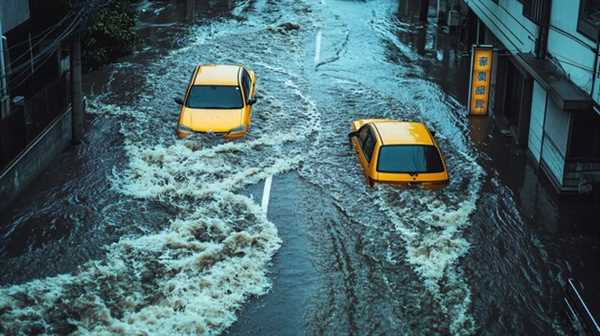
Be aware that purchasing vehicles affected by water incidents can yield significant savings. Salvaged vehicles often appear in the resale sector, drawn by the allure of lower prices. However, understanding the risks associated with these acquisitions is critical.
Statistics reveal a notable influx of damaged vehicles into the market after severe weather events. After hurricanes or heavy rainfalls, the number of such vehicles surges, leading to their availability at auctions. Buyers might be tempted by costs that seem too good to pass up; yet, it’s essential to consider the long-term repercussions.
Expertise in assessing the extent of damage is paramount before making a decision. It’s advisable to investigate vehicle history and previous incidents thoroughly. In many cases, insurance companies declare these vehicles a total loss, resulting in their transition to salvage pathways, where investors seek to offload them for quick profits.
Protecting your investment requires vigilance. Ensure comprehensive inspections and obtain reliable repair histories. This diligence can safeguard against the potential pitfalls lurking under the surface of these seemingly attractive deals.
Assessing the Financial Impact of Flood Damage on Automobile Value

Utilize vehicle history reports to identify water exposure and gauge the impact on market price. Affected models often drop value by 20-50% compared to non-impacted equivalents. Research comparable vehicles in your area to determine current selling prices and adjust for condition.
Inspection by a trusted mechanic can uncover underlying issues that may not be immediately visible, allowing for informed decisions. Look for signs of corrosion or mold, which can significantly diminish resale value.
Review insurance claims data; vehicles classified as total losses typically have reduced market appeal, making them a riskier investment. It’s advisable to keep detailed records of repairs and maintenance for future resale, as they help reinforce value retention.
Consider potential costs for remediation; even after repairs, a vehicle may never regain its full market potential. Anticipate additional depreciation if you plan to resell within a few years, as buyers often remain cautious about suspicious histories.
Understanding the Salvage Auction Process for Flood Vehicles
Research the vehicle’s history through reports like Carfax or AutoCheck to uncover any prior water exposure. These documents reveal past incidents that may affect the car’s condition significantly.
Inspect the vehicle thoroughly for signs of water damage. Check the interior for mildew, corrosion, and moisture, particularly under the carpets and in the trunk. This will help assess the extent of the damage.
Consult with a qualified mechanic before making a bid. Their expertise can provide insight into potential repairs and whether the vehicle is worth the investment.
Determine the potential resale value after restoration. Assess the market for similar vehicles to understand possible gains post-repair.
Be aware of the title status. A salvage title indicates the vehicle was deemed a total loss by an insurance company, affecting its resale options and insurance coverage.
Calculate the total cost of ownership, including transportation, repairs, and parts, which can vary widely based on the extent of the damage.
Consider your ability to handle repairs. Some purchases may require specialized knowledge or tools, so evaluate your resources accurately.
Participate in pre-auction inspections when available. This opportunity allows potential buyers to evaluate the vehicle closely before bidding.
Set a firm budget to prevent overspending during bidding. Research similar vehicles to anchor your maximum bid and make rational decisions based on data.
Stay informed about local regulations regarding registration and safety inspections, as these may differ for vehicles with branded titles. Compliance with these requirements is crucial to ensuring a legitimate transaction.
Identifying Warning Signs of Flood Damage When Bidding

Check the vehicle’s history report for indicators of water exposure. Look for terms like “insurance claim” or “salvage title.”
Inspect the interior for mold or mildew odors; a musty smell often signals long-term moisture. Pay attention to upholstery and carpeting for discoloration or signs of soaking.
Examine electrical components such as lights, dashboard displays, and air conditioning for irregularities. Water can cause shorts or failures in these systems.
Look under the hood for rust on mechanical parts that shouldn’t typically corrode. Check battery terminals for white powder, indicating oxidation from water damage.
Consider the condition of the trunk and wheel wells. Accumulated debris or sediment here can hint at submersion. Be vigilant for signs of repairs that seem inconsistent with the vehicle’s age.
Inspect the vehicle’s frame for unusual dents or misalignments, which could indicate past repairs from submersion impact. Verify that the paint job is even, as a recent overcoat might hide underlying issues.
Analyze the market for similar models. Prices significantly lower than average should raise suspicions, as they might reflect hidden water-related concerns.


